“Glam Rock Saved My Life”– THE HARD CANDY ISSUE OUT NOW
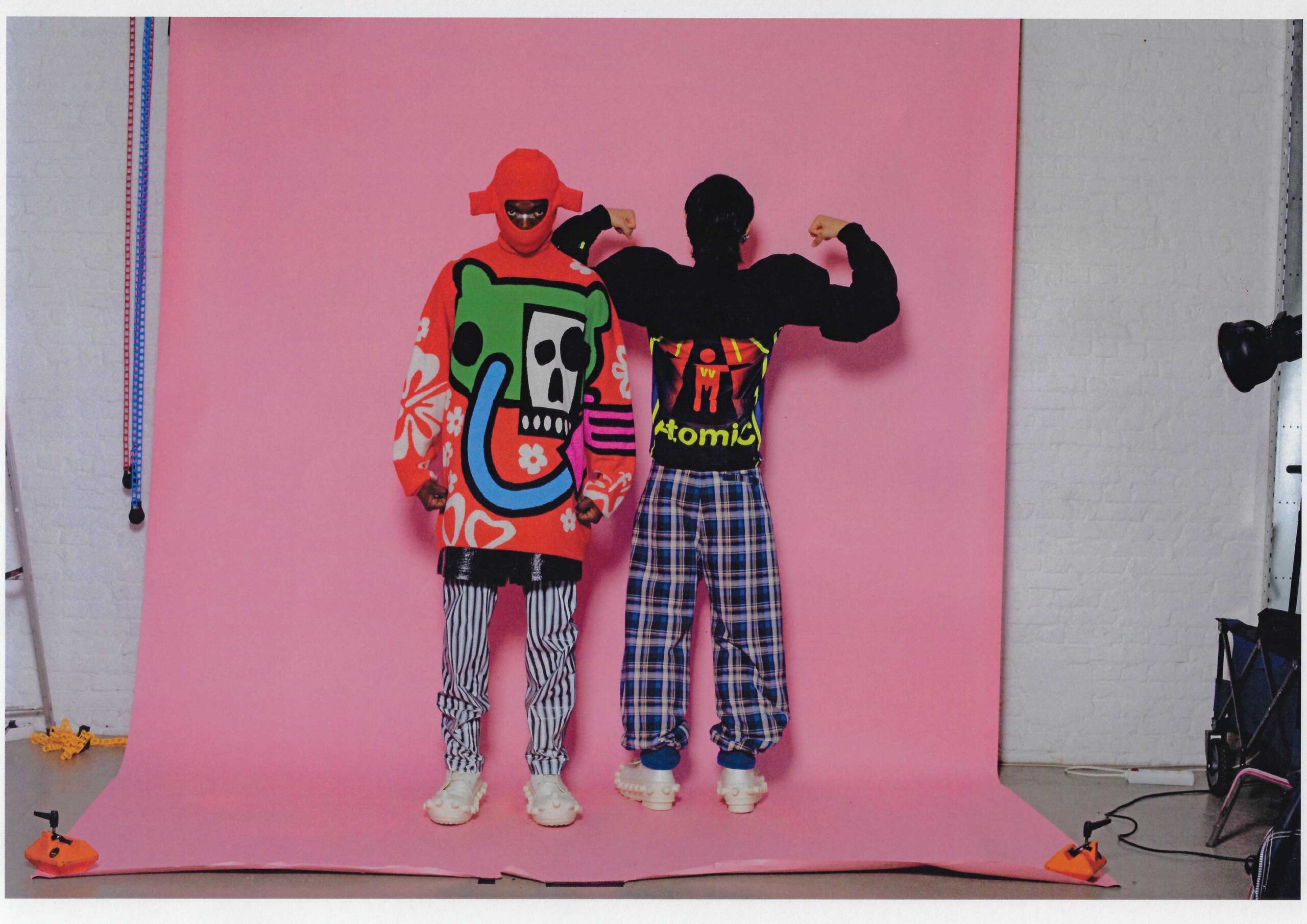
BOOM! WHAM! POP! KISS! A polychromatic ecosystem greeted us as we entered Walter van Beirendonck’s studio, inviting us into the physical manifestation of his mind. Loud and insistent, the energy of every object leapt from its resting place to twirl in the air, painting a soothing atmosphere grounded by a single nucleus: Walter himself. And you see, as visually loud as it may be, everything is infused with a calmness that van Beirendonck undoubtedly radiates.
Looking at his oeuvre, you’ll find a language that’s transcended the confines of time. What resonated then, resonates now, as a voice and mind that strives for what he believes in with unapologetic certainty. Released into the world after graduation from the Royal Academy of Fine Arts Antwerp, the maven refused to succumb to the industry’s path. So he and his academy friends decided to take things into their own hands, forming a group soon to be known as the Antwerp 6.
Even from Walter World-Wide, his main line under Walter van Beirendonck, the Belgian designer began showing us what dreams are made of and in 1993, he would go on to found the beloved, the iconic, Wild & Lethal Trash (W<). For those who don’t know, the legend goes as follows: after making his name in the Eighties, van Beirendonck got the financial backing of Mustang Jeans to found W<, adding a new branch to the van Beirendonck tree. While W< was gaining a cult following, van Beirendonck longed for autonomy over his creativity. So in 1999, he called checkmate to the industry, breaking his contract in the name of freedom. Undeterred, van Beirendonck took the new century head-on. Now, in 2024, he stands at the forefront of authenticity, pushing culture through his daring lens.
As I began to dig into the mind of the maestro, we sat there like his students, eager to learn more. It was clear why he was asked to teach at his alma mater only four years after graduating and later, in 2007, was bestowed with the head of the fashion department. Cradled by his wisdom, the possibilities of the world began to blossom in our minds. With an eye always towards the future, his voice and creations are needed now more than ever, acting as our beacon of resistance in the face of today’s world.
Hey Walter, how are you doing today?
I’m doing well! It’s been a busy period, but it’s a little bit calmer now.
That’s good to hear! I was curious: was there a moment growing up when you knew you wanted to go into the arts?
Yes! It took a while before I decided to study fashion design because it wasn’t really a common profession when I was younger—definitely not in my head. It was something I truly had to discover myself. But even before that, I knew from the beginning that drawing and colours were important for me and something I would carry alongside whatever I did.
You have such a distinct visual language. How did it fall into place?
I really fought to get my own signature; it didn’t come spontaneously. When I was a teenager, I was growing up in a rather tough environment for my expression. From an early age I attended boarding school with students who were interested in all types of things I wasn’t so I created my own world. It was my diary. I think ultimately this bubble made me stronger. And then when I began to study fashion suddenly all the dreams in my bubble were possible. Honestly, I think this bubble has stayed with me even till now; it’s a little bit just how I am. With this typical Walter world, I can really conquer the world.
So your world is so much more than just an expression; it’s where you find solace. How do you transform what resides in your imagination into actuality?
Fashion is communication. So first and foremost, I’m telling stories. But I’m also reflecting reality and the actual situation of the world. This is where I begin, with the message. Sometimes it’s more political; sometimes it’s more experimental. It ultimately depends on what I want to express in the moment. From there, I then look at how the collection actually looks and how I can experiment with that expression.
And who would you say you’re designing for?
Oh, that’s not an easy question because my audience didn’t grow grey with me! A new generation is discovering my work and archive. A lot of young people who are maybe 14 or 15 years old are wearing Wild and Lethal Trash (W<) from the Nineties. And the character Puk Puk is still their hero, which is amazing because I made Puk Puk as my alter ego 30 years ago now. So it’s a combination of people, from extremely young who just got introduced into fashion to people who have been following me over the years.
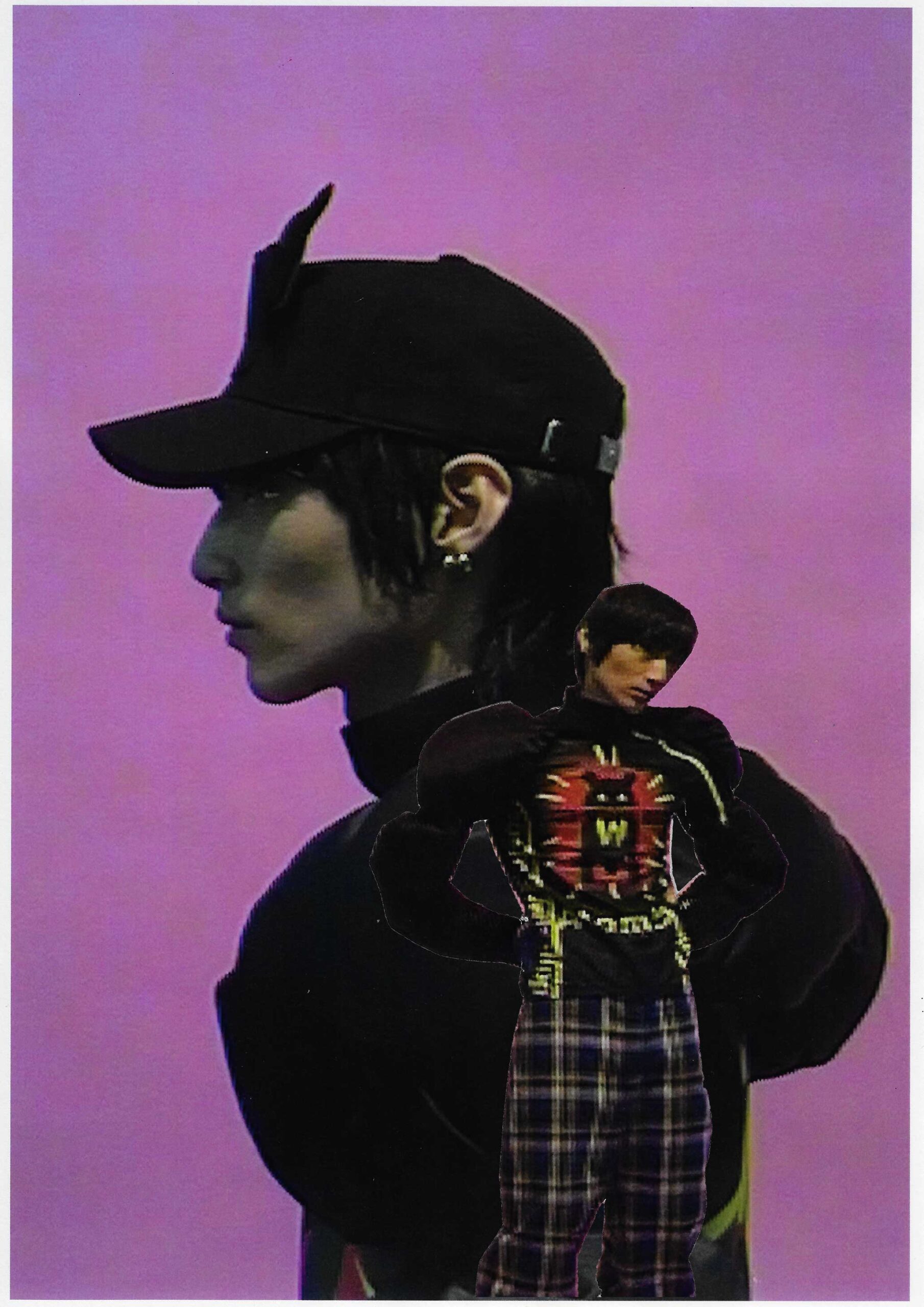
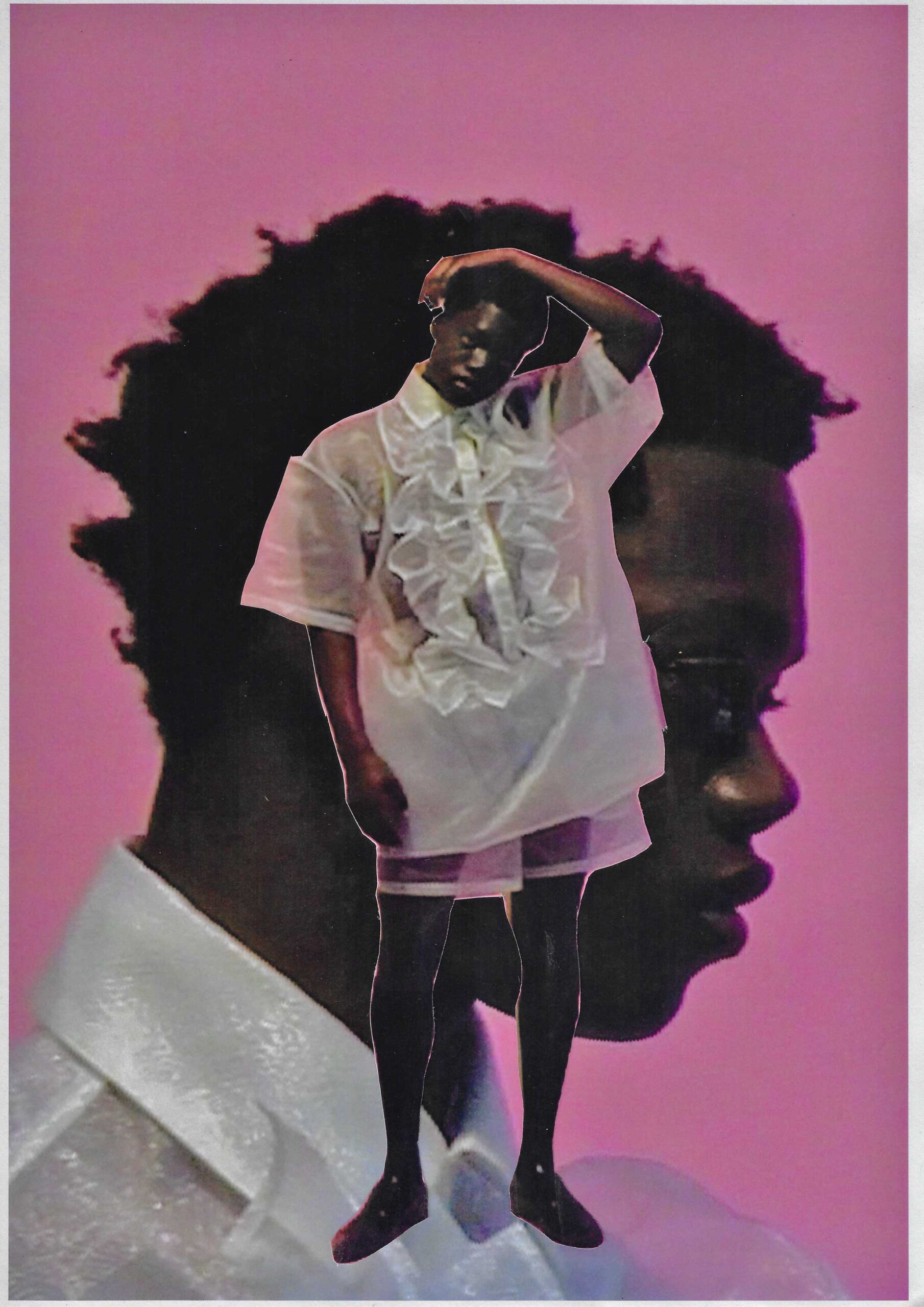
Your work has consistently disrupted conventions of menswear, gender codes, identity and notions of beauty for decades. How do you maintain this resistance in your current work?
You know, I’ve always found it rather normal to question these things, and I was surprised when suddenly, like, ten years ago, all these topics became so important in the mainstream. Everybody was talking about gender fluidity and diversity but it felt like they were late to the party. So now that the world is finally beginning to understand, I’ve been looking for new concepts to push. Lately, I’m interested in how we’re going to make garments in the future. I am conducting experiments that rethink all the basic techniques we’ve just accepted as fixed.
Wow, looking forward to seeing how this will manifest! So a lot of your work, especially in the Eighties and Nineties, found its home in specific subcultures. But as time has passed, subcultural groups have evolved to the point of, according to some, death. How have you experienced this change?
I find this an interesting question because I never intentionally approached subcultures; it was the subcultures who came to me. It started with the new beat in Belgium, and then house and techno music. One way or another, they were all really attracted to my graphics. So it was not that I desperately wanted to make something for the new beat generation or the techno generation, it just appealed to them so they started to wear it. I have a short story about this actually. When I was working on W< in the Nineties in Germany, I was also from time to time going to raves. But I didn’t look like the ravers. I was a motor guy with studs and big rings. Occasionally when I was queuing up they wouldn’t let me in and then other people had to explain to the bouncers, “He’s the guy making all our clothes! He’s one of us!” So it was sometimes weird to be ‘in’ a subculture without really being part of it. I think that’s the best though. Sometimes designers desperately focus on subcultures in an attempt to be cool. It feels a little fake, not really spontaneous, not effortless. This all happened effortlessly.
How have you experienced these types of communities disappearing?
It’s a pity because the practice of pushing subcultural ideas in fashion has also disappeared. I miss it. I think that fashion now comes from a completely different angle and it’s a shame. Especially for young people. Being part of a group that shares the same interests and values was such a strong way of expressing yourself. I mean, glam rock saved my life. That was also kind of a subculture because suddenly Bowie was there showing us that you could be anything you wanted, you could change your appearance, you could wear makeup. At that time it was like an explosion of freedom that suddenly came in my direction.
I think a lot of nostalgia for this type of community emerges in your work for younger generations who never got to experience it… On the topic of changing times, throughout your career you’ve faced a lot of uncertainty, like the aftermath of breaking your Mustang contract. During these moments, what kept you motivated to keep pushing through?
I believe in what I’m doing. I mean, my career is a rollercoaster. I went up, I went down, I went up again. Yes, there may have been moments where I couldn’t handle it financially or organisationally. But creatively, I’ve always felt I have something to tell and need to go on. I mean, the small collections I made during times of financial hardships like ‘Revolution’ or ‘Sex Clown’ actually had some of the largest impact. It’s all about believing in your ideas and what you want to tell with them. I remember the choice to be independent was so strong back then I was so happy that I broke the contract. I’m really always at the forefront—even my face—so it’s not something I could give up creative control of.
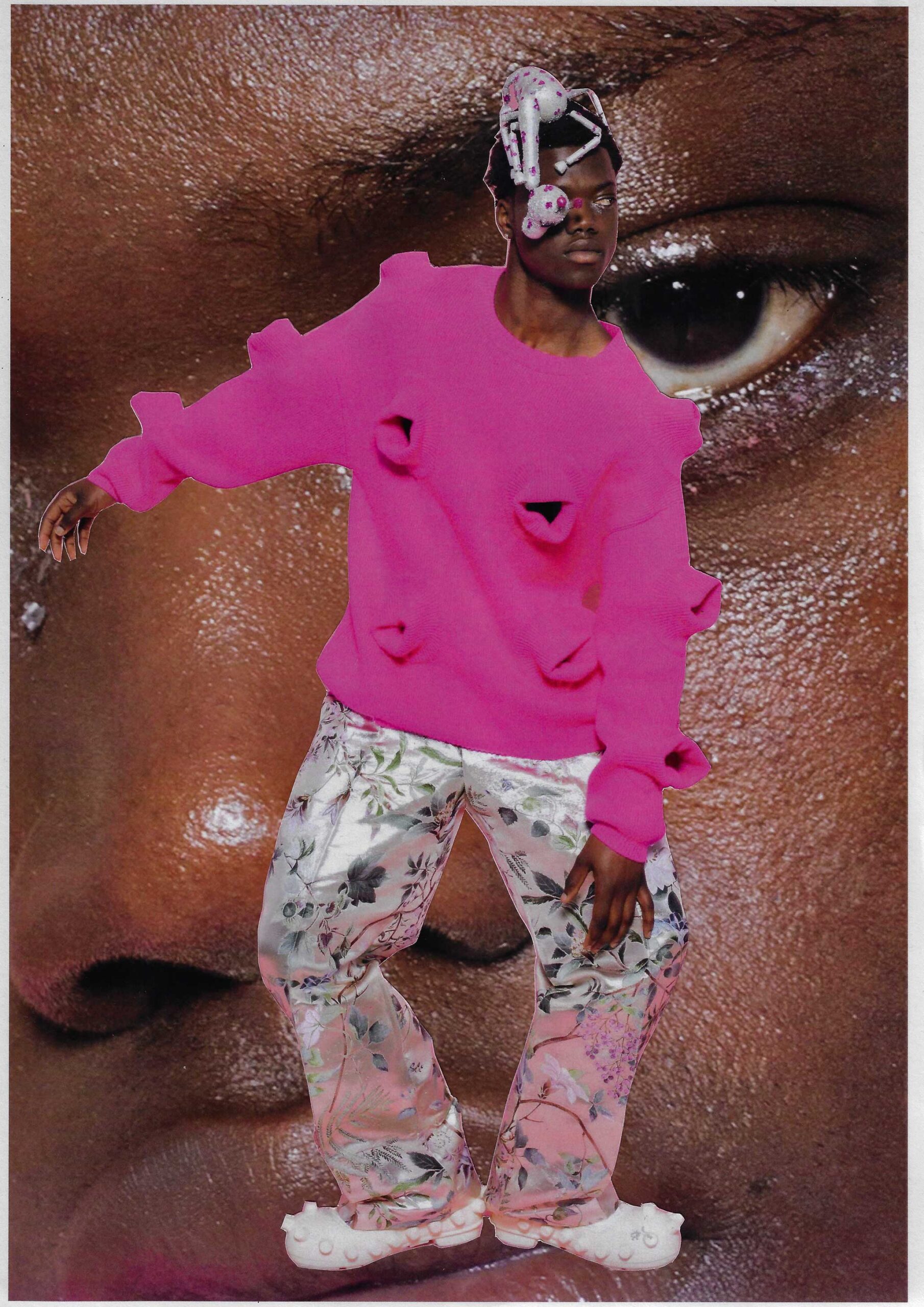
With Dries van Noten stepping down in June and many of your peers having already passed on their legacy, do you think that you would ever pass all this to somebody else?
Oh, I found the moment that Dries announced he is going to stop really sad… for the fashion world, but also the Antwerp fashion world. Of course, it’s happened before with members from the Six, but now I’m the only one standing. That being said, I’m really happy I’m still designing. I’m even on a high for the moment. I really want to continue as long as this wave lasts. And then I think I will be happy to just close off everything cleanly.
And that’s what makes you. I think in many ways it speaks to the power of what you’ve made. By staying independent, you create this timelessness that even new generations recognise.
Of course. There’s no other pressure. From day one, I’ve designed it myself and made all the decisions myself. Yes, I work with people, but makeup, styling, shoes, and accessories are all done by me.
So it’s been two years since you stepped down from your position at the Royal Academy. Did you feel ready?
I mean, I had to step down, that’s the strange thing. In Belgium, once you’re 65 you have to stop teaching. So I knew it was coming but still, it was hard because I started teaching in 1985. I miss it a lot. It was really a decision taken from me.
What do you miss the most about it?
The contact with the students. I guided them through their own ideas. That’s how I teach, I get in their heads, I try to understand what they stand for, what ideas they want to bring forth. And then from that I try to push them.
That’s beautiful and you’ve really cultivated some of the greatest minds of today. I know that the way you go about this yourself is through sketching. A little birdy told me that you have a book coming out about these sketches. Can you share a little more about it?
So the book is coming out in June during Fashion Week and it’s called ‘Draw the World Awake’—a play on my exhibition ‘Dream the World Awake’. It’s all about my research sketches. There are approximately 500 starting from the first collection, ‘Bad Baby Boys’, to the latest one I just finished. So that’s almost 40 years of drawings, ha-ha.
What was it like to return to your entire archive of sketches?
Well, it’s rather confrontational because I was going through my life and stuff I collected from 20 years ago. It was a big task to select them and feel all these memories coming back.
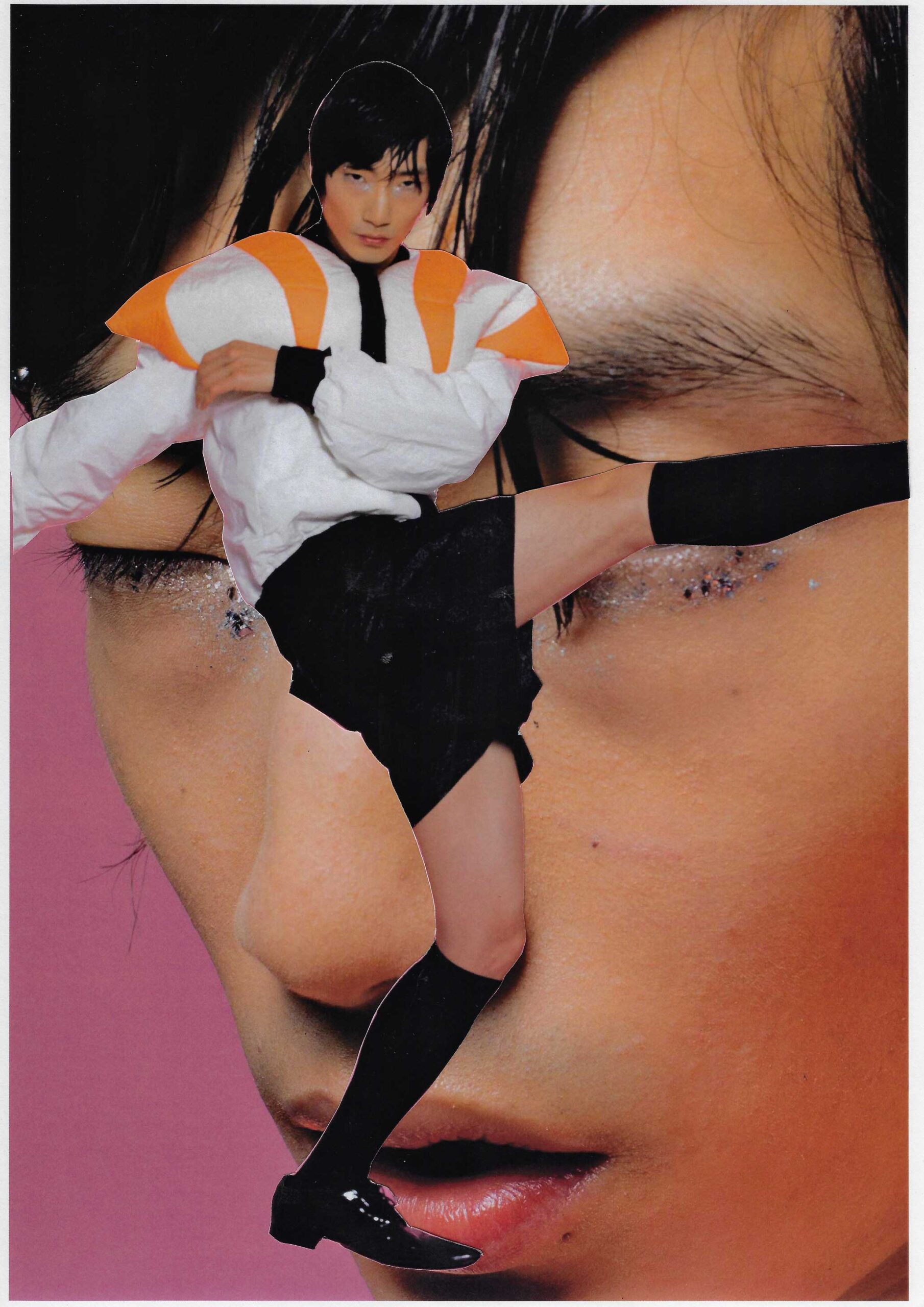
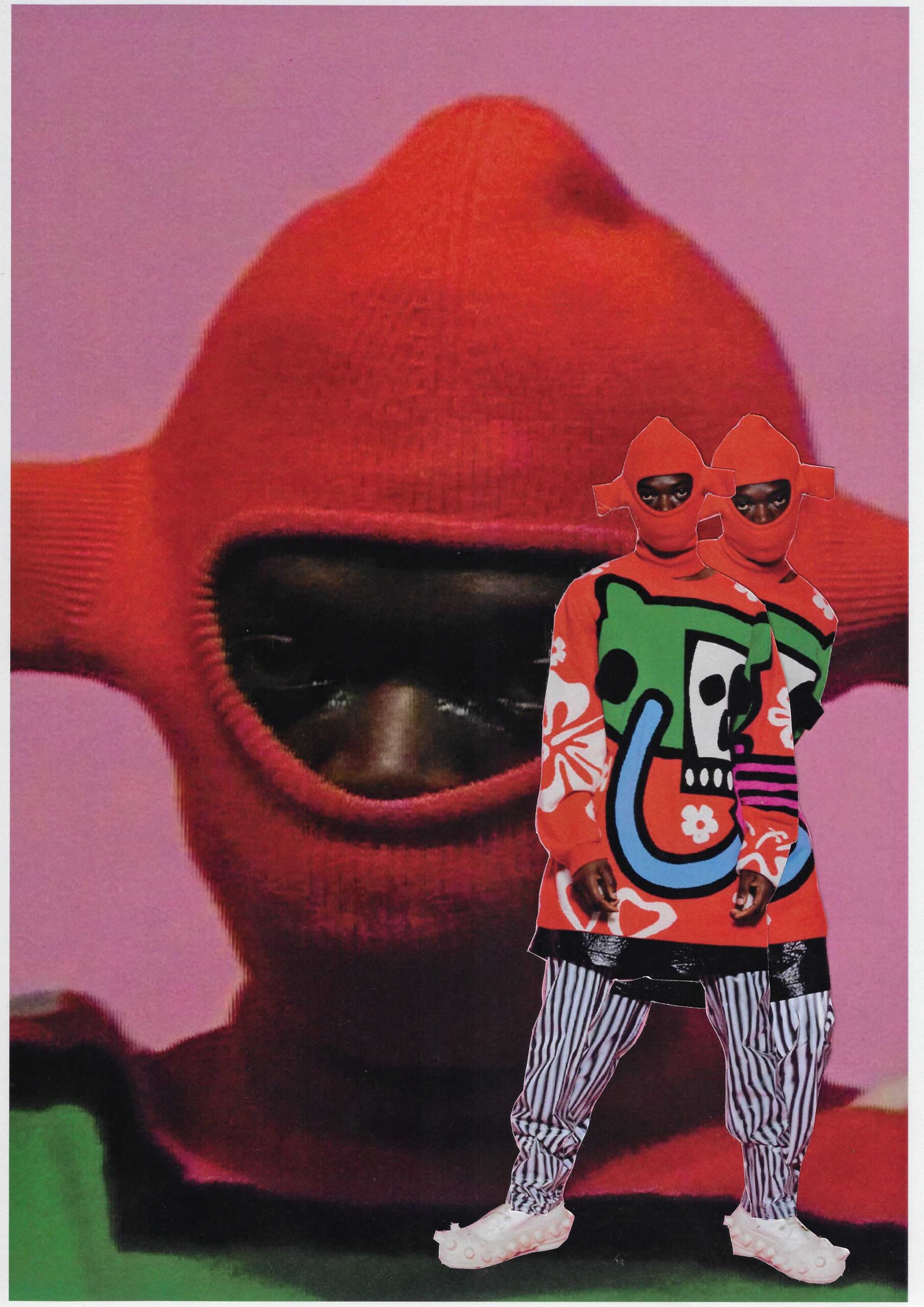
I can imagine—your entire career laid out in sketches! Let’s dive into your Spring/Summer ’24 collection. First of all, can you tell us the inspiration behind it?
So it’s literally about artificial intelligence. Everybody was fascinated by how present AI has become in the images we consume online. You start to question what is real and what is not real. Then I came across the story of Dawleetoo, a completely non-existent ‘lost’ city that was ‘rediscovered’ in the middle of a jungle. I found it interesting that all this information was online and you could research it but it’s not at all real—the images are AI-generated. So I took this and combined it with my love for crash dummies. I’ve always found it fascinating to see those images of cars crashing and the dolls flying around. In fact, the yellow and black of these dolls are the main colours of the collection. I then ran with this idea of colours signalling danger and foregrounded white and red as well.
Just out of curiosity, what are your thoughts on the relationship between our future and AI?
I would love to see where society will be in 50 years because AI will have an incredible influence on not only the way we think but how we experience reality. Forty years ago, we knew that when we were looking at something that it was real, but that’s not the case any more. I think the human race is going to evolve with technology. And of course, artificial intelligence gives you power to come up with the most alien-like subjects!
Yeah, our entire sense of reality will morph. So back to the collection, ha-ha. I wanted to talk about the skeleton body bags during the flood…
That statement was not appreciated by everybody. It was really weird. There was a literal war happening and I found it confusing that so few people were thinking or even talking about it. I mean, the world is on fire and nobody was caring, so I needed to make a statement. I really wanted to show lots of people in body bags because that’s what you see in the media. It was a last-minute decision. I took clothing dust covers and we spray painted skeletons on it, and then we pulled it over the boys at the end of the show. The bags had big letters on the back spelling out “Stop terrorizing our world!”.
You also end the notes for this collection with a call to action: “Dream big but keep protecting our humanity.” Who or what do you think is endangering humanity?
Putin. I mean, there are some tough things happening in the world right now. The world can literally be destroyed by these wars, by this aggression. I’ve lived through wars but at the time they felt far away. That’s not the situation anymore. We are involved. I mean, if Putin wants to bomb Brussels, Belgium is gone. We have diseases, a climate crisis, but now on top of that there is this extreme aggression. And of course, there will always be war somewhere in the world, but one way or another, we must find solutions.
How do you see your role in the face of danger?
I mean, I’m doing fashion while the world is falling apart around me. It sometimes feels like I’m in a field that doesn’t make sense right now. But I try to do what I can do, even if I can’t solve all the problems in and outside the industry. I aim to be me in a transparent and honest way—simple but still effective. And that gives me a reason to keep on going.
While sometimes it may feel frivolous with everything happening in the world, I think by doing things your way your voice can actually be heard. Just like you said in the beginning, fashion is communication.
You’re right, because in the end I can talk about all these problems. I don’t think that designers from a big fashion house are even able to talk about them. If what they say becomes political it could harm their clients and that can harm their handbag sales… So yeah, I’m happy I have the privilege to speak out about the things I care about.
Words by Ella Paritsky
Creative Direction by Rogier Vlaming
Photography by Dyro @ ILA Studio
Videography and styling by Pykel van Latum
Hair and make-up by Mary Corbeel
Modelled by Baek @ Volks Management and Daniel @ Brooks Modeling Agency
Lighting assistance by Charles Pigneul
Styling assistance by Ella Paritsky and Agata Villa